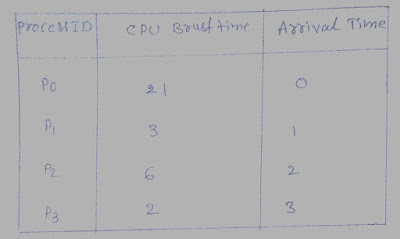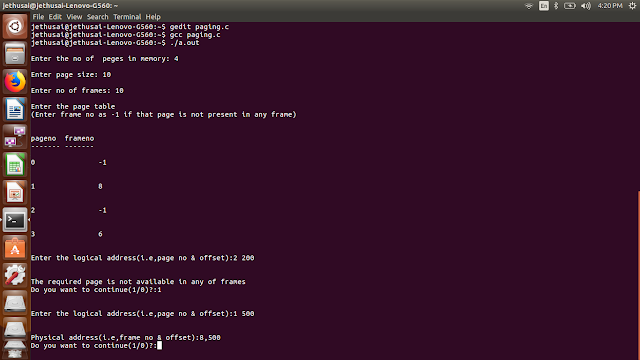First come first served scheduling algorithm (FCFS)
First come first served scheduling
algorithm (FCFS)
FCFS also termed as
First-In-First-Out i.e. allocate the CPU in order in which the process arrive.
When the CPU is free, it is allowed to process, which is occupying the front of
the queue. Once this process goes into running state, its PCB is removed from
the queue. This algorithm is non-preemptive.
Advantage
- Suitable for batch system.
- It is simple to understand and code.
Disadvantage
- Waiting time can be large if short request wait behind the long process.
- It is not suitable for time sharing system where it is important that each user should get the CPU for equal amount of time interval.
Examples
consider the following set of processes having their CPU-burst time. CPU burst time indicates that for how much time, the process needs the CPU. If the processes have arrived in order P0, P1, P2, P3 then the average waiting time for process will be obtained from Gantt chart.
consider the following set of processes having their CPU-burst time. CPU burst time indicates that for how much time, the process needs the CPU. If the processes have arrived in order P0, P1, P2, P3 then the average waiting time for process will be obtained from Gantt chart.
In this post, we have
assumed arrival times as 0, so turn around and completion times are same
Completion Time: Time at
which process completes its execution.
Turn Around Time: Time
Difference between completion time and arrival time.
Turn Around Time = Completion Time – Arrival
Time
Waiting Time (W.T): Time
Difference between turnaround time and burst time.
Waiting Time = Turn
Around Time – Burst Time
Average waiting time = 17.25
Average turnaround time = 25.25
below example without arrival time
below example without arrival time
Thus average waiting time will always depends
upon the order in which the processes arrive. And vary depending upon whether
the processes having less CPU-burst arrive first in the ready queue. Therefore
this algorithm is never recommended whenever performance is major issue.





Comments
Post a Comment